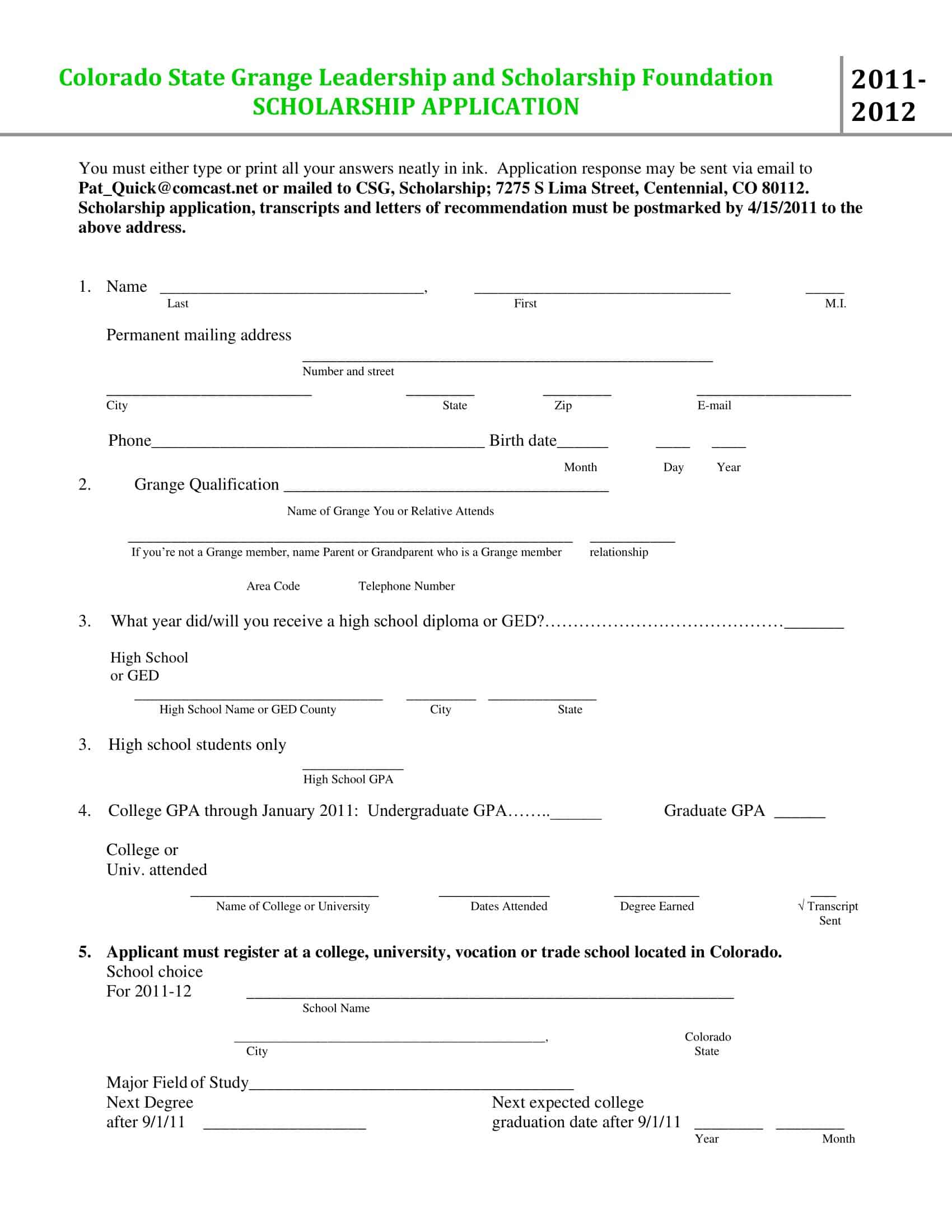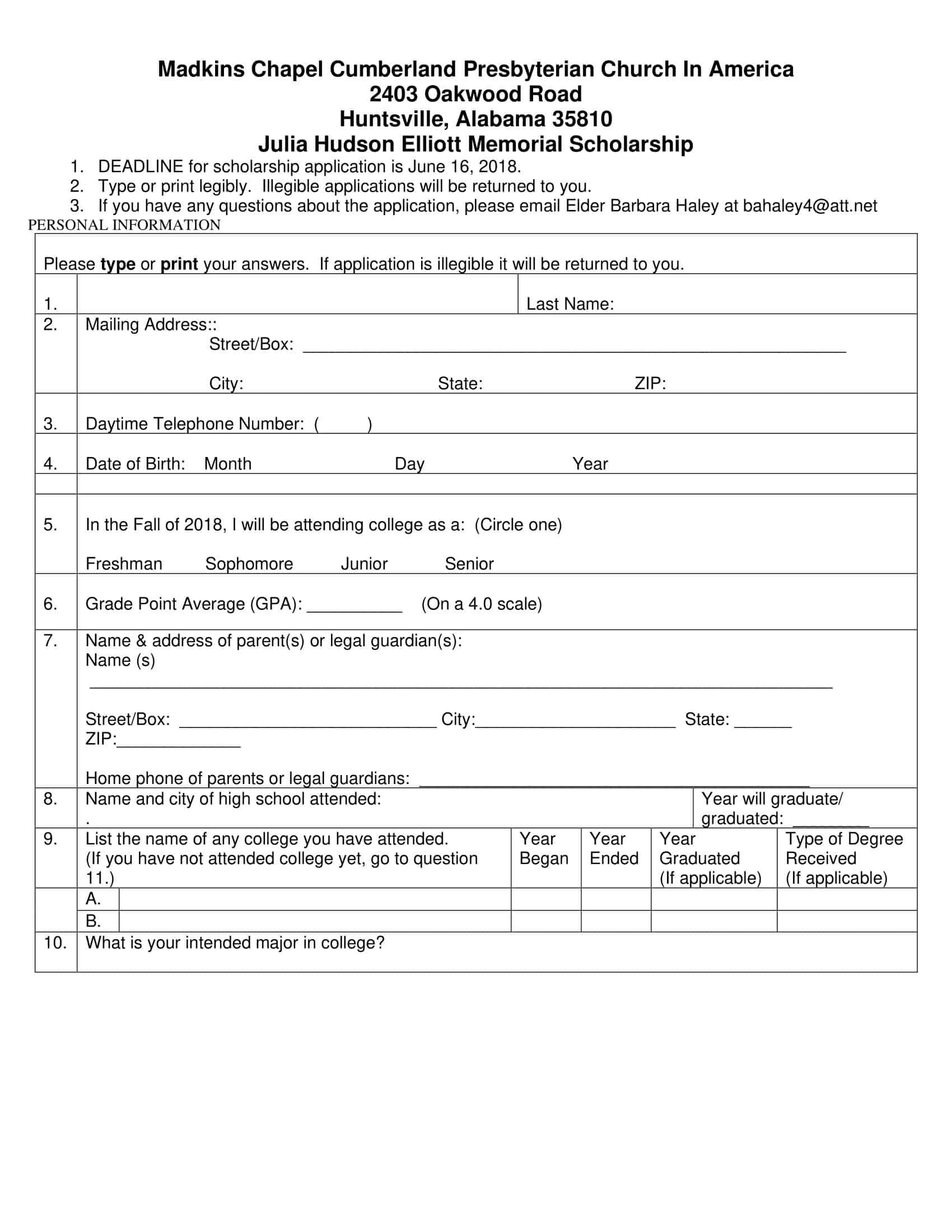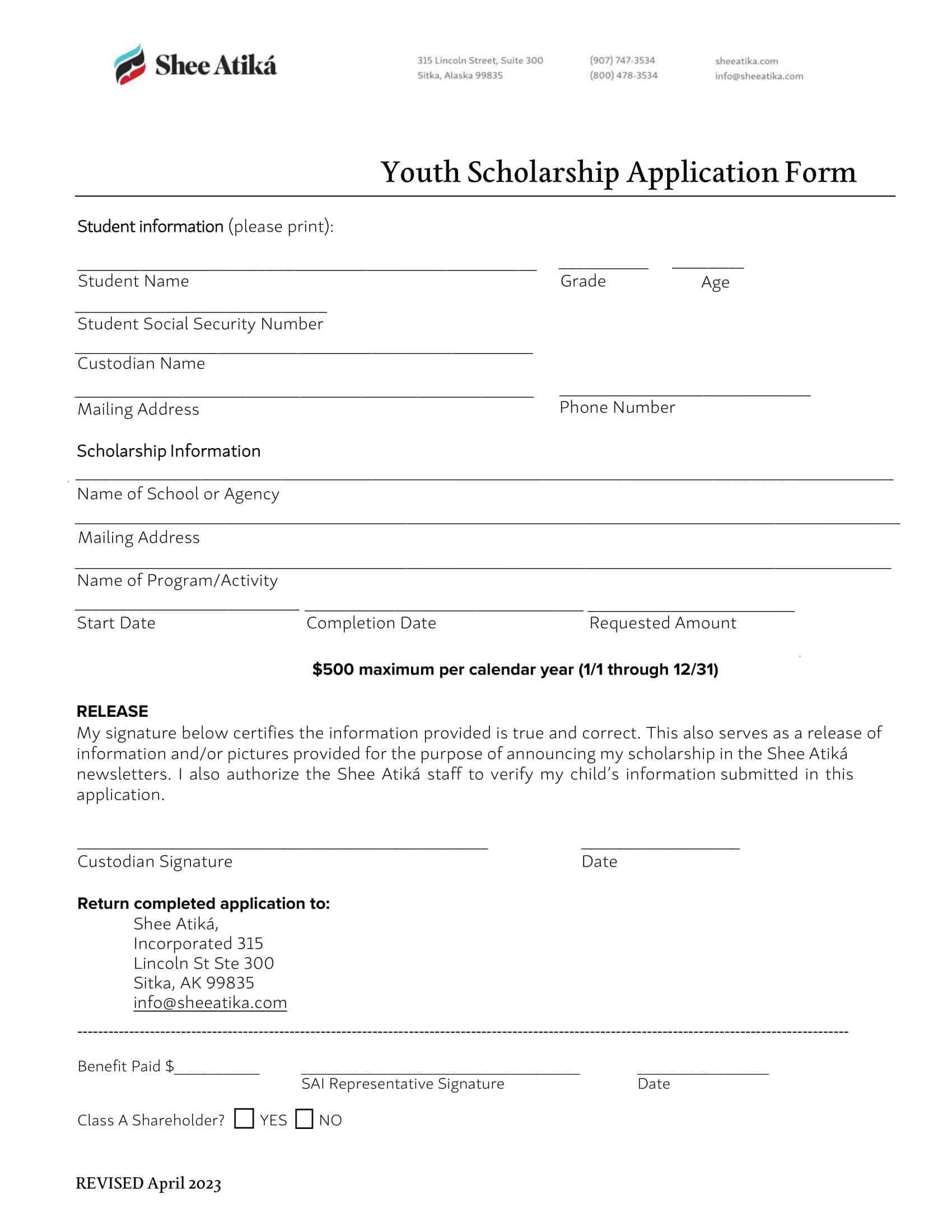Scholarships provide a valuable opportunity for students to offset the costs of higher education and achieve their academic goals. Applying for scholarships can seem like a daunting task, but with the right information and preparation, it can be a smooth and rewarding process.
In this article, we will guide you through the steps of the scholarship application process and provide tips for making your application stand out. Whether you are a high school student, an adult returning to school, or already enrolled in college, this article is designed to help you maximize your chances of securing scholarship funding for your education.
Table of Contents
Scholarship Application Templates
Scholarship Application Templates are pre-designed formats used by students to apply for scholarships and grants to support their education and academic pursuits. These templates provide a structured framework for students to present their qualifications, achievements, and personal information in a clear and organized manner. Scholarship Application Templates ensure consistency, professionalism, and thoroughness in the application process, helping students effectively showcase their strengths and increase their chances of securing financial assistance for their studies.
Scholarship Application Templates offer a structured and organized approach to applying for scholarships and grants. By using these templates, students can effectively present their qualifications, achievements, and personal information to scholarship providers. These templates facilitate consistency, professionalism, and thoroughness in the application process, increasing the chances of securing financial assistance for their education. Scholarship Application Templates serve as valuable tools in supporting students’ academic pursuits, helping them access the financial resources necessary to achieve their educational goals.
What is a scholarship application letter?

A scholarship application letter is a letter written by a student or applicant to a scholarship committee or organization, expressing their interest in and eligibility for a scholarship. The letter typically includes information about the student’s background, academic achievements, career goals, and financial need, as well as a request for consideration for the scholarship award.
The letter serves as an introduction to the student and provides a chance for them to demonstrate their qualifications and reasons for seeking the scholarship. A well-written scholarship application letter can increase the chances of the student being selected for the scholarship and help to secure funding for their education.
What to include in your scholarship application
When applying for a scholarship, it is important to provide a well-rounded and complete application that showcases your academic achievements, extracurricular activities, and future goals. Here are some key components to include in your scholarship application:
Personal Information: This may include your full name, address, phone number, email, and date of birth.
Educational Information: List your current or most recent educational status, such as high school student, college student, or graduate student, along with the name and location of the school you attend or last attended.
Transcripts: Include copies of your academic transcripts, which show your grades and academic achievements. If you are a current student, you may be able to obtain transcripts from your school’s registrar office.
Test Scores: If required by the scholarship provider, include your standardized test scores, such as the SAT or ACT.
Essays: Many scholarship applications require an essay, which gives you the opportunity to showcase your writing skills and highlight your achievements, goals, and plans for the future. Be sure to follow the guidelines and prompts provided by the scholarship provider.
Letters of Recommendation: Some scholarships may require letters of recommendation from teachers, counselors, or other individuals who know you well and can speak to your academic ability and character.
Extracurricular Activities: List any clubs, sports, volunteer work, or other extracurricular activities you have been involved in, along with any leadership roles you have held.
Work Experience: If you have work experience, include a list of your past and current jobs, along with the duties you performed and any relevant skills you developed.
Financial Information: If required by the scholarship provider, include financial information, such as your family’s income and expenses, to demonstrate financial need.
Supporting Documents: If applicable, include any other relevant documents, such as awards, certificates, or portfolios, to support your application.
It is important to follow the guidelines and instructions provided by the scholarship provider, as well as proofread your application for spelling and grammar errors. Make sure to submit your application before the deadline and keep copies of all documents for your records. Good luck!
When You Need to Write a Scholarship Application Letter
A scholarship application letter is typically required when a student is applying for a specific scholarship program or opportunity. Some scholarship providers may require a letter as part of the application process, while others may not. Here are some scenarios when you may need to write a scholarship application letter:
When applying for a scholarship: Many scholarship programs require a scholarship application letter as part of the application process. The letter is used to provide additional information about the student and to demonstrate why they are a strong candidate for the scholarship.
To supplement other materials: Even if a scholarship program does not explicitly require a scholarship application letter, you may choose to submit one anyway to provide additional information about yourself and your qualifications.
To express financial need: If a scholarship is based on financial need, a scholarship application letter is an opportunity to explain your financial situation and why you are in need of financial assistance to pursue your education.
To provide additional information: If the scholarship application form does not provide enough space to fully convey your qualifications and achievements, a scholarship application letter is a way to provide additional information to the scholarship committee.
In general, if you have any doubts about whether a scholarship application letter is required, it is always best to check with the scholarship provider or check the application instructions. A well-written scholarship application letter can help you stand out from other applicants and increase your chances of receiving the scholarship award.
How to write a scholarship application letter
Here is a short and simple guide for writing a scholarship application letter:
- Start with a formal greeting and address the letter to the scholarship committee or recipient.
- Open the letter by introducing yourself and explaining why you are writing. Mention the scholarship for which you are applying and why you believe you are a good fit.
- State your academic background, achievements, and relevant experiences that make you a strong candidate for the scholarship.
- Highlight your future goals and how receiving this scholarship will help you achieve them. Explain how the scholarship fits into your larger career or academic aspirations.
- Show enthusiasm and gratitude for the opportunity to apply and mention any attachments or supporting documents that you have included with the letter.
- Conclude the letter with a thank you and provide your contact information.
- Proofread the letter carefully to avoid any errors and make sure it is well-organized and easy to read.
Tips:
- Keep the tone professional and avoid using slang or informal language.
- Personalize the letter by addressing the specific requirements of the scholarship and showing how your experiences and goals align with the criteria.
- Be concise and to the point, avoid writing more than a page.
FAQs
How do I apply for a scholarship?
The application process for scholarships can vary, but common steps include filling out an application form, submitting transcripts and test scores, writing essays, and providing letters of recommendation.
What is the eligibility criteria for scholarship applications?
Eligibility criteria for scholarships vary, but common requirements include being a full-time student, having a certain GPA, being in a specific major or program of study, and demonstrating financial need.
What is the deadline for scholarship applications?
Deadlines for scholarship applications also vary, so it’s important to research the specific scholarship you’re interested in and make note of its deadline.
How can I increase my chances of getting a scholarship?
Ways to increase your chances of getting a scholarship include: researching and applying for scholarships that match your qualifications, writing a compelling essay, maintaining a high GPA, and building a strong network of references and mentors.
What documents do I need to submit with my scholarship application?
Typically, you’ll need to submit transcripts, test scores, essays, and letters of recommendation with your scholarship application. The specific requirements will vary depending on the scholarship.
Can I reapply for a scholarship I did not receive in the past?
Yes, you can reapply for a scholarship you did not receive in the past, as long as you meet the current eligibility criteria.































































![Free Printable Roommate Agreement Templates [Word, PDF] 1 Roommate Agreement](https://www.typecalendar.com/wp-content/uploads/2023/06/Roommate-Agreement-150x150.jpg)
![Free Printable Credit Card Authorization Form Templates [PDF, Word, Excel] 2 Credit Card Authorization Form](https://www.typecalendar.com/wp-content/uploads/2023/06/Credit-Card-Authorization-Form-150x150.jpg)
![Free Printable Stock Ledger Templates [Excel,PDF, Word] 3 Stock Ledger](https://www.typecalendar.com/wp-content/uploads/2023/08/Stock-Ledger-150x150.jpg)
